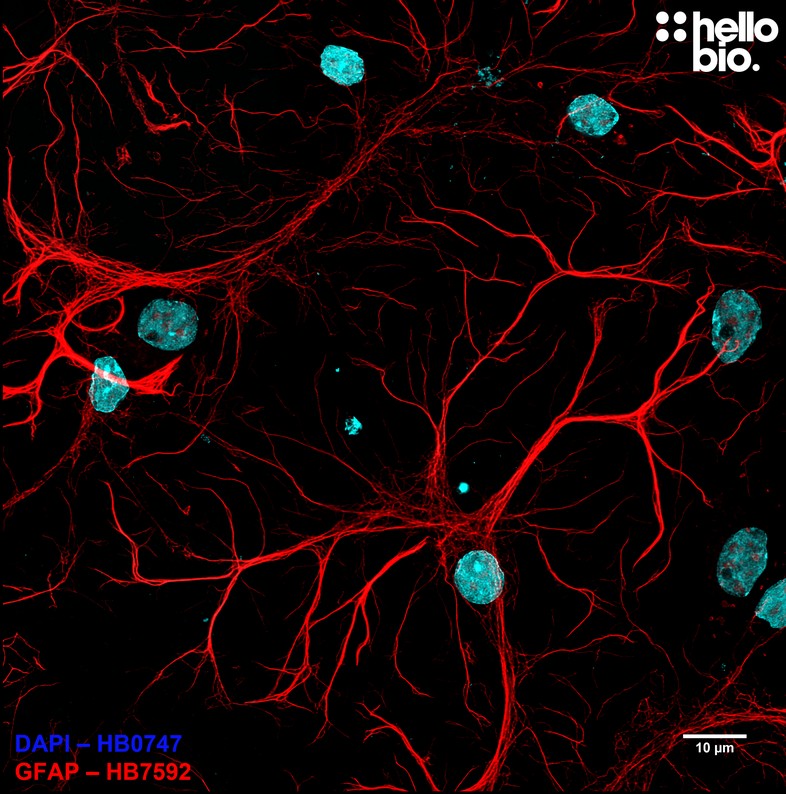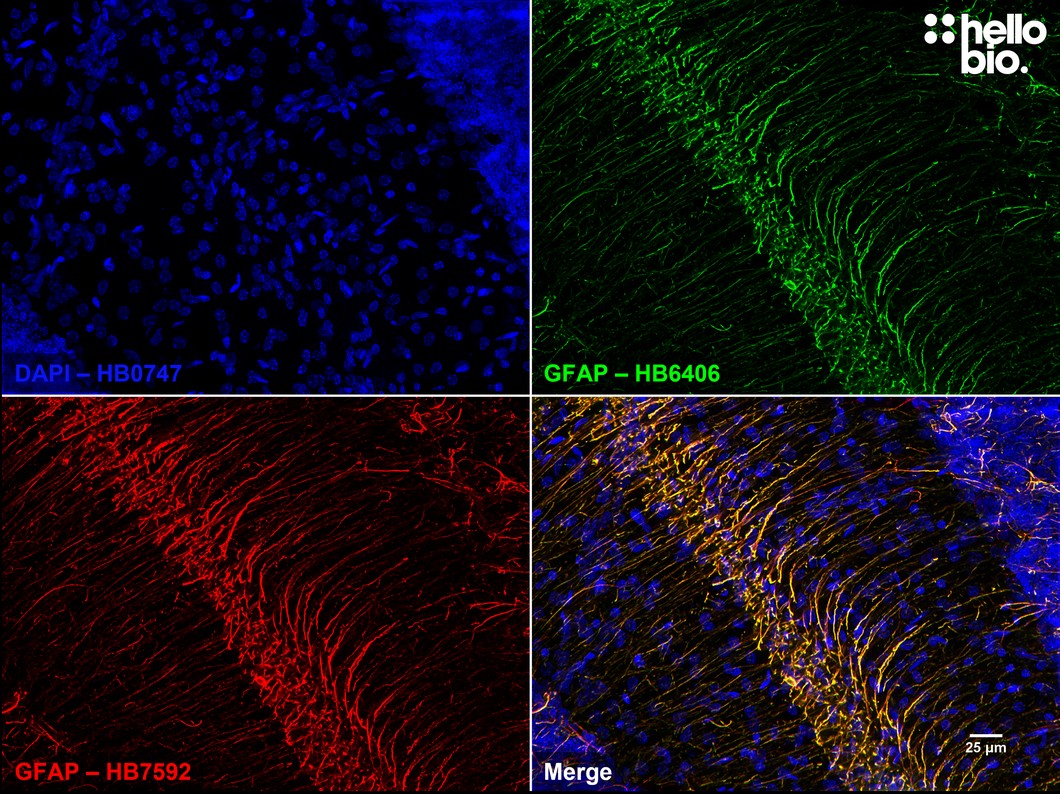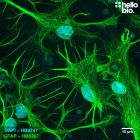What is GFAP a marker for?
GFAP (Glial Fibrillary Acidic Protein) is a marker for astrocytes, which are a type of glial cell in the central nervous system (CNS). GFAP is an intermediate filament protein expressed predominantly in mature astrocytes and is commonly used as a marker in research and diagnostic pathology to identify these cells.
What is the function of GFAP?
The function of GFAP (Glial Fibrillary Acidic Protein) is primarily structural and supportive. It is an intermediate filament protein that contributes to the cytoskeletal structure of astrocytes in the central nervous system (CNS).
What is the role of GFAP in neurological diseases?
GFAP (Glial Fibrillary Acidic Protein) plays a significant role in various neurological diseases due to its involvement in the structural and functional integrity of astrocytes. Changes in GFAP expression are associated with:
- Reactive gliosis in CNS injury, often as a result of acute trauma leading to a glial scar,
- Lesions found in multiple sclerosis which have high GFAP expression,
- Astrocytomas and Glioblastimas can often express GFAP which can be used as a diagnostic marker
- Neurodegeneration is often associated with upregulation of GFAP expression in damaged brain regions.
What mounting media do you recommend to use with this antibody?
We recommend using one of our high performance mounting medias, supplied as either hardset or aqeous with a range of counterstains:
Hardset:
Aqueous:
What counterstains do you recommend for use in ICC and IHC with this antibody?
What guarantee do you have that my GFAP antibody will perform as expected?
We guarantee that your GFAP antibody will work for the applications and species we list on the datasheet. If the antibody fails to perform as expected then we are happy to offer a 100% refund guarantee. For more details please see our guarantee policy.
Will my GFAP antibody work against species that have not been listed on the datasheet?
A species not being listed doesn’t mean that the GFAP antibody won’t work, just that we haven’t tested it. If you test one of our antibodies in a new species please let us know (positive or negative)!
What protocols are available for use with this GFAP antibody
We have made a comprehensive collection of protocols that we have used in our experiments to validate this GFAP antibody.











 Paraffin Embedded IHC Protocol (IHC-P)
Paraffin Embedded IHC Protocol (IHC-P)

